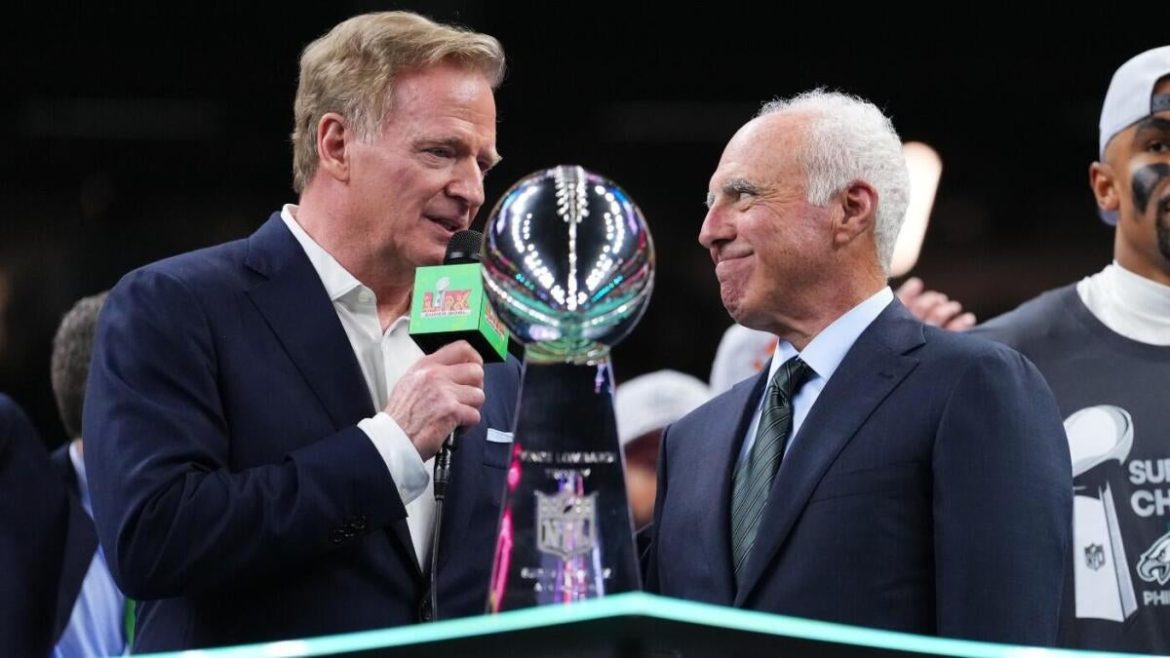The “Tush Push” Controversy: A Deep Dive into the NFL’s Heated Debate and Vote
Introduction: The Tush Push Under Fire
In recent weeks, the “Tush Push,” a short-yardage quarterback sneak tactic popularized and perfected by the Philadelphia Eagles, has become the center of impassioned discourse across the National Football League (NFL). The play, which involves teammates pushing the quarterback from behind to help him gain critical yards, has elicited divergent opinions about its legitimacy, safety, and impact on the game. A proposal spearheaded by the Green Bay Packers to ban the play culminated in a closely contested vote at the NFL’s spring league meetings in Eagan, Minnesota. Despite significant opposition, the ban failed narrowly by a vote of 22-10, falling two votes short of the required 24 to enact a prohibition.
This report will analyze the origins, arguments, stakeholders, and aftermath of the “Tush Push” debate and voting, providing insight into why such a seemingly simple play has stirred such fervor, as well as what it means for the NFL moving forward.
Origins and Nature of the “Tush Push”
The “Tush Push” is a quarterback sneak variant wherein offensive teammates, usually from the backfield or offensive line, physically push the quarterback forward from behind during a short-yardage situation, particularly near the goal line or in critical third- and fourth-down plays. While quarterback sneaks have long been a staple in football strategy, this coordinated shove from teammates amplified forward propulsion, making the play highly effective.
The Philadelphia Eagles adopted this tactic notably during their recent championship runs, with quarterback Jalen Hurts credited for the play’s execution and success. The play’s effectiveness was on full display during the Eagles’ Super Bowl-winning season, which elevated its prominence around the league.
The Proposal and the NFL Owners’ Vote
The Green Bay Packers, among others, proposed banning the “Tush Push” in order to address concerns ranging from fairness, competitive balance, and potential player safety implications. The proposal suggested disallowing teammates from pushing the quarterback forward during sneaks to reduce perceived undue advantage.
At the NFL owners’ meetings, this proposal sparked a “heated” and “tense” debate that reportedly included sharp exchanges between owners and league executives. According to multiple sources, the debate unfolded during general sessions attended by all 32 owners and leadership figures, including Commissioner Roger Goodell. The passionate nature of the discussion highlights how divisive the issue was within the ranks.
When put to a vote, 22 owners supported banning the “Tush Push,” while 10 opposed. However, because the NFL requires at least a 75% majority — equating to 24 votes — to pass rule changes, the ban ultimately failed. This narrow margin reflected how polarized the owners were on the issue.
Factors Influencing the Voting Outcome
Several elements complicated the voting dynamics:
Perspectives from Key Stakeholders
– Philadelphia Eagles and Supporters: The Eagles have been the chief beneficiaries of the “Tush Push,” which factored significantly into their scoring success. They vocally defended the play to owners, emphasizing its legitimacy and effectiveness. The team’s players, including notable figures like Jason Kelce, testified in its favor during meetings.
– Green Bay Packers and Advocates for the Ban: The Packers spearheaded the push for banning, driven by arguments related to safety and fairness. They believed the play undermined proper quarterback sneak principles and gave teams using it a disproportionate advantage. Despite gathering significant support, their campaign fell just short.
– NFL Leadership and Committees: The Competition Committee and league executives were deeply involved, aiming to mediate the contentious viewpoints. Reports indicate that their meetings were “heated,” reflecting the complexity of balancing innovation, safety, and competitive integrity.
– Other NFL Owners: Owners were sharply divided. Some centered on tradition and strategic freedom, others prioritized player safety concerns, while a portion advocated further studies and longer deliberation.
Aftermath and Ongoing Debate
With the ban narrowly defeated, the “Tush Push” remains legal for at least the upcoming 2025 season. Teams are free to continue exploiting this short-yardage tactic, likely preserving the status quo in goal-line offense strategies.
Nonetheless, the narrow vote and emotional nature of the discussion suggest the issue is far from settled. The league indicated it is open to revisiting the ban in future meetings, particularly as further data and opinions emerge. The debate highlighted how deeply ingrained and impactful this particular play has become to NFL identity and competitive dynamics.
Impact on the Game and Fans
For fans, the controversy around the “Tush Push” adds fuel to arguments about rule changes and the evolving nature of the NFL. It taps into broader questions about balancing tradition with innovation, competitive fairness, and safety in a sport that thrives on physicality.
The vivid scene from the owner meetings, including passionate arguments and crude humor, showcases football’s emotional significance and how something as seemingly minor as a pushing tactic can ignite league-wide upheaval.
Conclusion: The Tush Push—A Microcosm of NFL Evolution
The NFL’s tight vote to preserve the “Tush Push” underscores the complexity of making rule changes in a sport deeply rooted in tradition yet dynamic in strategy and player safety concerns. It reveals a league wrestling with how to nurture innovation while maintaining fairness and protecting its players.
Far from a simple tactical debate, the “Tush Push” controversy encapsulates how football’s culture, competitiveness, and governance intermix in passionate dialogue. As the play lives on, the NFL and its stakeholders will undoubtedly revisit this contentious topic, reflecting on lessons learned and the ever-evolving landscape of America’s game. For now, the “Tush Push” remains a signature maneuver, emblematic of the modern NFL’s blend of physical toughness and tactical creativity.





